An Interview with Rev. Bob Larson by Robert Hood
One exorcism film is among my horror favourites, namely William Friedkin’s 1973 classic The Exorcist, based on the equally excellent book by William Peter Blatty. There was no shortage of exorcism films in the 1970s — in the wake of The Exorcist, its massive box office success and its unique Oscar performance (as the first horror film to be nominated for Best Picture) — though most of them were cheap knock-offs. 1979’s The Amityville Horror and its progeny probably fit in the genre, too, as the entity causing the trouble is more demonic than ghostly. Since 2000, there has been a plethora of movies in this possession/exorcism sub-genre, with recent examples such as The Exorcism of Emily Rose and The Last Exorcism doing decent business, and they rarely fail to generate an entertaining chill or two. Now we have The Devil Inside (see the Backbrain article The Devil’s Inside the Details). A “real” exorcist has proclaimed this one a worthy depiction of exorcism — the most accurate of the bunch — and interviews with him have flooded the internet as a result.
When a representative of Paramount Pictures in Australia contacted me to ask if I’d like to talk to “The Real Exorcist”, Rev. Bob Larson, I immediately agreed. Real-life accuracy isn’t of particular interest to me when it comes to such films — artistic conviction and internal consistency within an imaginary context being what I require of fantasy/horror stories, as well as the power of the central conflict as a metaphor. However, as the chance had arisen I thought it would be of benefit to get the perspective of someone who believes in the literal existence of demons. I knew nothing about Rev. Larson, but the idea of talking about The Devil Inside with someone who claimed to regularly dispossess victims of demonic occupancy seemed like an interesting opportunity. I was willing to give it a go.
Rev. Larson isn’t an archetypal Catholic exorcist, of course — rather an American fundamentalist version of an exorcist, with an effective publicity machine, a 575-page encyclopedia (Larson’s Book of World Religions and Alternative Spirituality) that is said to be “a standard reference … at many colleges and seminaries” and 31 other books under his belt, a training seminary for exorcists, and a reputation that includes having hosted a reality TV show called “The Real Exorcist” — in which, on a weekly basis, he exorcised possessed individuals willing to get their 15-minutes of fame in this rather extreme manner.
When he came on the line he sounded reasonable enough, though reception was poor and as we spoke his words shuffled in and out of audibility, making real interchange difficult. This wasn’t his fault, of course, or the consequence of demonic harassment (I assume), but the result of some mundane demon of telephony. Later, as I transcribed his words I thought I could hear airport sounds in the background. Perhaps he was in transit.
I began by asking Rev. Larson if his experiences with exorcism were generally as dramatic as those in the movies.
Rev. Larson: They can be, yes. There aren’t the special effects and smoke and mirrors [of cinema], of course, but I have seen many kinds of supernatural occurrences, including unnatural changes in the atmosphere, the violence, speaking in other languages, often uncharacteristically obscene, the person knowing things that couldn’t have been known through natural means – types of things we’re familiar with from films. For example, [as in The Devil Inside] there’s a case where a woman is on a quest to find out if what happened to her mother was caused by a mental issue or by demons and she finds that the mother knows things about her that no one else knows, she speaks in a language she does not know … one of the more interesting things is this issue of the dilation of pupils and I’ve seen that happen many hundreds of times.
The Catholic Church, I believe, is very stringent about ever performing exorcisms as an official thing. They like to validate it to the n-th degree first and so as a result very few ever happen. Obviously many people see those who are supposedly possessed as having a mental illness. How do you differentiate between mental illness and demonic possession?
Rev. Larson: That’s relatively easy to tell. First of all, if a person comes to me who has been psychiatrically evaluated, mental illness has been determined and they are under proper medication for it, then they don’t need an exorcism. That’s quite obvious. In borderline cases and instances where either explanation might apply, then that’s the task of the exorcist to find out. I can understand why the Catholic Church is cautious. Well over 50% of people who come to me in need of an exorcism are Catholics and many of them have demons and unfortunately they couldn’t get help from the Church because of these very strict measures. [Again as in the film] you see these very young priests who are unwilling to put up with that discipline but are very serious about wanting to help people – and that’s why they go outside the boundaries of the Church and perform exorcisms. Unfortunately they get themselves into a little bit of trouble because they get in over their heads.
In regards to The Devil Inside. Like a lot of exorcism films, it makes claims to being based on true events, in particular the story of Maria Rossi, who apparently rang 911 to confess to a multiple murder and who had previously been involved in an exorcism. I was wondering if, with your experience, you know whether this background story is real or just part of the film’s fictional construct.
Rev. Larson: That’s a good question and it’s part of the mystery of it. I’ve been a spokesman for this film but I was not at all involved in the development of it in any capacity. I was brought in at the end. Paramount seems to be a little silent on the accuracy of it, as to whether all of [the events] included were in the original incident. However, it very well could be because what goes on we read about in the newspaper all the time. Terrible acts of violence. There have been very celebrated cases – one in Ohio where a woman, possessed, did murdered a Catholic priest. That kind of thing can happen.
Have you seen the whole film?
Rev. Larson: Yes, of course, I was given an advanced screening. That’s one of the reasons I’m on this, as I liked what I saw in terms of its factual approach.
From your experience, are the details of the possession and exorcism as depicted in it fairly accurate then?
Rev. Larson: It’s the most accurate of any of these films – and I’ve seen them all. This one comes over as really different. In fact in the first part of the movie, before they really get into the whole horror genre, there’s a lot of discussion about exorcism – what it is and what it isn’t. It centers around this issue of whether the mother has a psychological problem or [is possessed by] a demon – and a dialogue develops concerning theological issues.
As an exorcist yourself, do you think that Hollywood’s fascination with the subject, especially after The Exorcist back in 1973, is a healthy one or are there dangers attached to this pop-culture fascination?
Rev. Larson: Well, there’s a lot of danger attached to the fascination of it. But I don’t think most people delve into the wrong or darker side of it, as a result of that fascination, unless they’ve got something else much more serious wrong with them. I think Hollywood is just in it for the bump in the night. They’re scary and they’re inexplicable – you see that in all the ghost hunting shows and so on. But this particular movie really isn’t in that genre. It isn’t like Paranormal Activity, I don’t think, even though it takes that whole documentary approach. It is scary but is much more in touch with reality.
It’s arguable that the heightened interest in films of exorcism and demonic possession in popular culture corresponds to periods of social uncertainty and fear for the future. The 70s was a period of great change and a lot of people felt uncomfortable with the way morality was going, for example. They felt something was taking their children away from them, and this is reflected in The Exorcist. Certainly since the year 2000 there’s been an upsurge in these sorts of films and the events of 9-11 have to be responsible for creating the psychological background for the cultural upsurge. Do you find that a reasonable proposition from your particular point-of-view?
Rev. Larson: I think that’s a very reasonable proposition, but I also think there is legitimate rise in actual evil activity. I think it can be quantified and it’s very clear to me from the case load that we have that people want to know who’ll come to their aid in the face of it. I think sometimes that the interest [in exorcism stories] is occurring because the level of demonic activity in society has quantitively grown.
By this stage the interference on the phone line had become worse and I had to leave it there, even though I hadn’t had much of a chance to interact with Rev. Larson and would have liked to discuss other issues. Still, it had been interesting and I finished up with an acute awareness that, assuming his genuine belief in what he was saying, Rev. Larson perceives the world very differently than I do. His is a world where demons abound, where many people are literally possessed by evil personified — not metaphorical demons either. That’s a pretty disturbing thought. For him the accuracy of The Devil Inside allows the film to act as a warning, even if much of its content is fictional.
The Devil Inside premieres in Australia on 1 March. See the Backbrain article The Devil’s Inside the Details for more details.

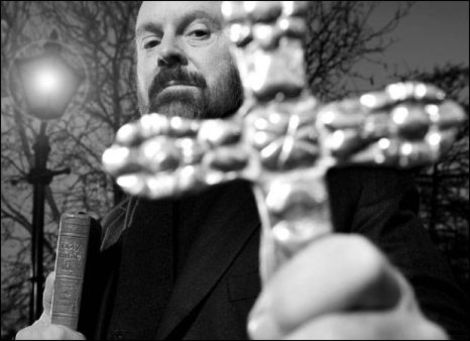
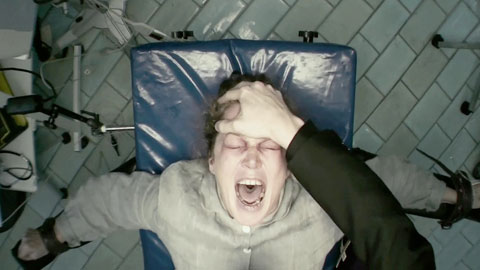
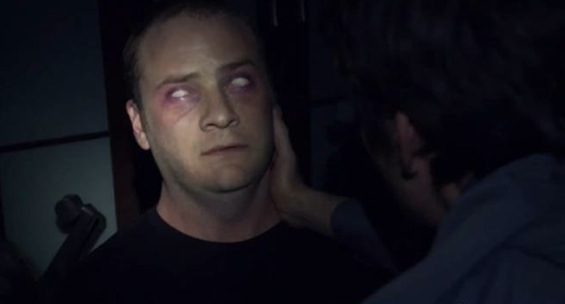
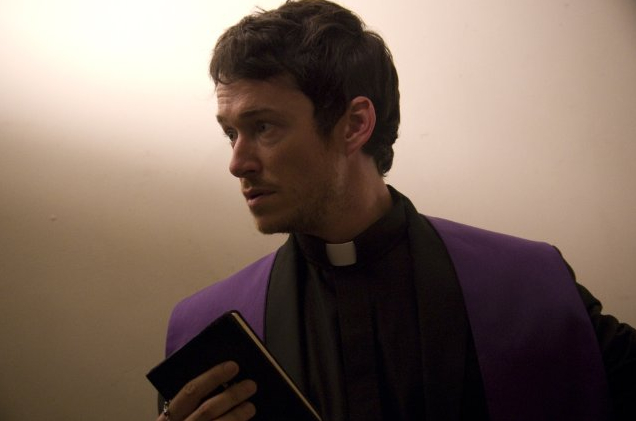
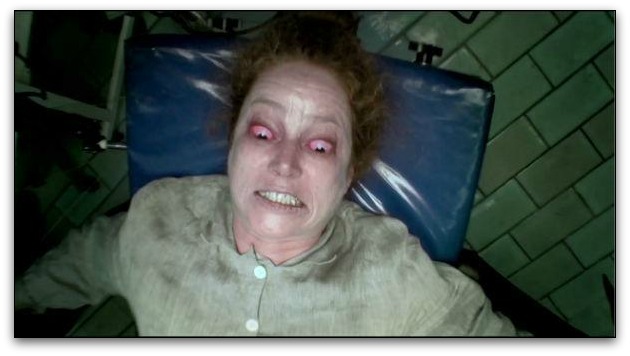
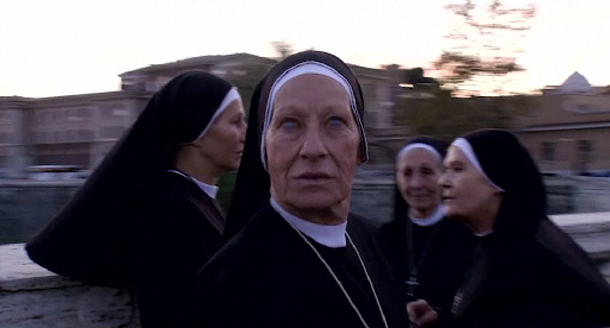

I am wary of those claiming to be exorcists, I put them in the same category as mediums & psychics only more harmful. Had experience dealing with organisations that use the fear of demonic possession to control and abuse the mentally ill and manipulate their adherents.
This guy is no different to John Edward – an equally dishonest huckster only far more dangerous to the people he victimises for his bandwagon to keep rolling.
While religious leaders who only claim to be exorcists for the fame, power or whatever are harmful, demonic possession is real. Jesus himself speaks of this in the Bible and I believe Him. I also believe it to be a rarity and not all are afflicted by demons, but by mental problems. Also, if the holy spirit is in us, how can we be taken over by something evil? I have no worry of being possessed, but if we mess with certain things, ie: ouija boards, we can be oppressed by demons. In fact, I know from personal experience. I love Jesus!
Jesus The King! Our Lord of Selfless Sacrifice and Magic we do not yet know or understand.
,mhetivhqjkgkvjwum